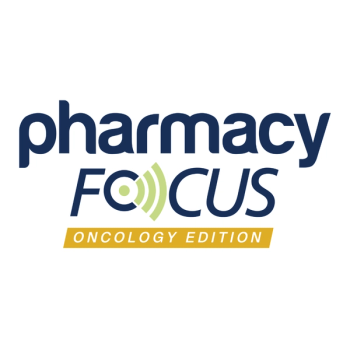
- May/June
- Volume 9
- Issue 3
Market Access in Oncology: Shooting for the Moon
Market access and health care professionals must work to find the balance to provide solid treatment for cancer without burdening the system to a point of collapse.
The Specialty Pharmacy Times® tradition of focusing on oncology in our midyear edition, timed to the American Society of Clinical Oncology (ASCO) conference in Chicago, continues this month. Never has there been a more exciting time in the development of specialty products for the treatment of cancer. Our industry is developing treatments that are eradicating cancers or extending life at higher rates than ever before. These therapies are felt across the spectrum of health care delivery, from the community oncologist to the high-touch Cancer Centers of Excellence.
However, new oncology products typically come at a price and at a time in which the cost of health care is front-page news on a daily basis, the question that remains is whether our system can afford it. We must find solutions to provide quality health care with economics that don’t force individuals to be hit with tremendous premiums or tough choices. The cost of treating cancer is a huge burden on our current economic infrastructure. Market access and health care professionals must work to find the balance to provide solid treatment without burdening the system to a point of collapse, and this balance must recognize that we cannot slow down the advancement of care.
The Cures Act and Oncology
The 21st Century Cures Act was signed into law on December 13, 2016. The legislation provides the National Institutes of Health (NIH) with critical tools and resources to advance biomedical research across the spectrum, from foundational basic studies to advanced clinical trials of promising new therapies. The act allocates a total of $4.8 billion to the NIH over 10 years and authorizes $1.8 billion in funding for cancer. An initial $300 million was appropriated in fiscal year 2017 to fund cancer initiatives. This funding is largely tied to the Cancer Moonshot, a government-sponsored program designed to accelerate oncology research to help make more therapies available to more patients while also improving the ability to prevent cancer and detect it at an early stage. Let’s probe a bit deeper into one of the most challenging areas in the market today, that of reimbursement, by focusing on one of the newest categories of products, chimeric antigen receptor T-cell therapy (CAR T).
A New Class of Products: CAR T
CAR T products were approved for commercial use only recently. This immunotherapy is intended to enable the immune system to detect and destroy cancer cells. The process begins with the removal of T cells from a patient that are then reengineered in a laboratory. In doing so, the T cells are genetically changed so they will destroy the cancer cells once injected back into the patient. Typically, CAR T therapy is injected just once into the patient’s body, where the cells multiply and the efficacy of the treatment increases over time.
In late 2017, the FDA approved 2 new CAR T therapies, with several more currently in development. Kymriah (tisagenlecleucel) is indicated for the treatment of children and adults 25 years and younger with relapsed/refractory B-cell precursor acute lymphoblastic leukemia and is priced at $475,000. Yescarta (axicabtagene ciloleucel) is indicated for adults with relapsed/refractory diffuse large B-cell lymphoma and is priced at $373,000. These products have begun to force a paradigm shift in the way that market access professionals manage their oncology portfolio.
Choices and New Market Access Strategies
How does the health care system absorb these new high-cost therapies? CAR T therapies present a whole new set of challenges for payers that cross the spectrum of reimbursement. Typically, the patient is treated in an institutional oncology setting where the T cells are removed from the body. After being sent to the manufacturer’s lab and engineered into the final product, the drug is subsequently frozen, shipped back, and finally infused into the patient. There are costs associated with the facility, the medical staff, and the drug. Given that CAR T-cell products are complex compared with community oncology-administered products, manufacturers are seeking creative mechanisms to access the market.
On the CMS front, Novartis, whose CAR T product, Kymriah, was the first to be approved, announced an outcomes-based arrangement designed to create efficiencies in the health care system. According to an agreement between Novartis and CMS for Kymriah, CMS will not pay for patients who fail to respond within the first 28 days of treatment. The nondrug costs are typically tied to a patient’s hospital stay.
Expect that under the current system of CMS reimbursement, these products will be reimbursed at average sales price plus 6%. Manufacturers of these high-cost, onetime therapies must consider creative strategies that often lead to putting “skin in the game,” in which drug coverage is, in part, based on the positive outcome of the patient.
Government-sponsored programs such as CMS place legal restrictions on what a manufacturer may do to gain market access, but the game plan varies with commercial coverage. It is likely that commercial payers will see a combination of value-based pricing/contracting, potentially using similar thresholds as those of the CMS agreement. The commercial payer market is estimated to comprise 50% to 60% of CAR T patients. The CAR T manufacturers’ websites offer patients, payers, and providers a host of assistance programs to help assure that patients who are prescribed the drug are able to access it. These programs offer co-pay assistance and patient assistance programs, including transportation and accommodations for eligible patients and up to 2 caregivers to support compliance with the safety monitoring period.
Treatment Pathways: Oncology’s Tool for Optimal Therapy
Patient care should always come first in the therapy decision process; however, cost cannot be ignored. Given the complexity of cancer treatment, clinical practice guidelines have been developed to review and construct data to facilitate therapy decisions. Pathways provide guidelines that can standardize oncology care. Although several oncology organizations have developed guidelines, the best-known include the National Comprehensive Cancer Network and ASCO. The process these organizations follow to develop their respective guidelines varies, using a combination of literature review, clinical trial results, and modalities of treatment comprising panels of experts who work in collaboration. Guidelines are continually updated to reflect the evolving landscape and new drug approvals. Stakeholders, including market access decision makers, can access these guidelines through the respective websites.
Specialty Pharmacy Oncology Management
Clinical oncology pharmacists have become active participants in the process of treating cancer. Given the advancements we have seen, the clinical pharmacist is often working in institutional settings, managed care, specialty pharmacies, and community oncology clinics. They play an instrumental role in determining which therapies a patient receives using the tools described above, as well as in the preparation, administration, and reimbursement of products both infused and oral. The clinical pharmacist has played an evolving role in managed care settings, particularly given the increased importance of oncology, which is the third-highest category of specialty drug spending.
Using traditional utilization management tools, these professionals have expanded their duties to include oversight of a health plan’s coverage of both oral and infusible oncology products. Many of these products are billed under a medical benefit in which, unlike the drug benefit, clinical pharmacists often use manual systems to review oncology spend. To assure appropriate use and coverage, prior authorization is viewed as the most effective method to drive access based on the approved labeling. Treatment pathways also are important tools.
Another common strategy is to use a short-fill or short-cycle dispensing program. In this case, the specialty pharmacy will ship a 1- or 2-week supply of a new medication, communicate with patients about their ability to tolerate the medication, and allow for discontinuation of subsequent refills, as appropriate. The patient is charged a co-pay or coinsurance on the first fill, while subsequent refills adjust for any additional coinsurance, as needed. Industry estimates suggest that a 25% savings in drug cost can be achieved with this type of program.
Specialty and Taking Charge
Specialty pharmacies help control cost with such services as patient support and education to ensure compliance and monitor adverse effects, as well as specialized handling and distribution of medications directly to the patient or care provider. Specialty pharmacy continues to lead the process of patient care and of assuring that value is created and that there is a return in the health care investment dollar. We welcome your feedback on this topic and on any topics you would like us to cover in future editions of Specialty Pharmacy Times®ï¡¿. Please reach out to me at dsteiber@pharmacytimes.com. We also encourage you and your colleagues to subscribe to this unique journal by logging on to specialtypharmacytimes.com.  
Articles in this issue
over 7 years ago
Why Is CAR T Therapy the Next Step for Oncology?over 7 years ago
Variations and Nuances in Colorectal Cancer Drug Dosingover 7 years ago
The Cost of Treating Cancerover 7 years ago
Oncology Economicsover 7 years ago
Health-System Perspectives on Oncology Market Access in 2018over 7 years ago
Aiming for Value Over Volume in Cancer Drug SpendingNewsletter
Stay informed on drug updates, treatment guidelines, and pharmacy practice trends—subscribe to Pharmacy Times for weekly clinical insights.









































































































































































































